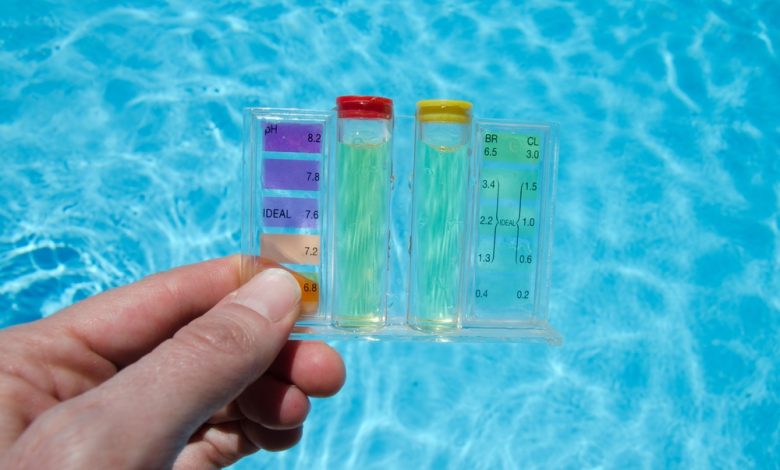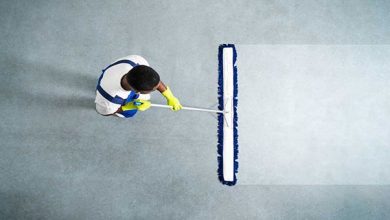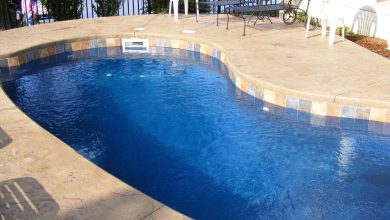Why Water Balance is so Important for Your Pool?

Water balance is probably the most important thing for your pool. You can address nearly 90% of the pool issues with water balance. There can be problems, if alkalinity or pH is too low or Calcium levels are high enough. It is not enough to eliminate leaves, dirt, and insects from your pool, if you haven’t taken care of water balance. It means the chemical balance in your pool is right along with total alkalinity. You also need to ensure calcium hardness, sanitisers, total dissolved solids, and pH measures are also at the required levels.
It is not enough to only check pH levels a few times a year to maintain the water balance. There are several other things to do other than checking pH levels.
Importance of Water Balance for Your Pool
Water balance is the most important thing for your pool that merits top priority. It is important because it concerns the health of your pool users. If the water balance is not maintained, the contact with the pool water can be damaging to the pool users. Too much chemical in the pool can lead to several skin ailments to the users especially those that have sensitive skin. Some common skin ailments include skin irritation, rashes, and eye-irritation. It is critical to check water balance at frequent intervals to ensure the safety of the pool users.
Water balance is also important to ensure pool life and to maintain hygienic quality of water. Poor quality pool water will surely damage pool systems including the pool shell. It costs less to maintain than to repair a bad pool. It is advisable to design a scheduled testing routine and to comply with the schedule. A negligent attitude can be damaging to the health of the pool users and to the pool itself. Your inground fibreglass pools newcastle has been designed with substantial investment to last long. You cannot afford to take any risk with maintenance to avoid costly repairs.
Components Involved in Water Balancing
There are several components involved in water balancing. Unless you know these components, you may not understand how to maintain the water balance in your pool. Here are the factors that go into water balancing.
Alkalinity or Acidity Level and the pH
A pH scale is the scale to measure acidity or alkalinity of your pool water. On this scale, the value 7 indicates the neutral level. The values of 8,9,10, and so on indicate gradually increasing levels of alkalinity where the value 14 means the highest level of alkalinity. In the same manner the values of 6,5,4,3, and so on indicate increasing levels of acidity. It means the lesser this value is, the more acidic your pool water. The recommended level of pool water is the pH value from 7 to 7.4. This value represents the neutral level.
It is critical to avoid pool acidity. The natural consequence of acidity is corrosion. An acidic pool not only supports the corrosion of the pool system but also promotes organic contaminants in the pool. If acidity is left neglected for a long time, the damage can be quite intense. It can damage the plumbing fixtures, pumps, and the water lines. It will also promote the unwanted growth of organic matters like bacteria and algae. If the pH level is high, water flow is likely inhibited. The heating system will not work effectively. Your pipes and liners might be exposed to the damage.
Health consequences are likely to follow a mismatched pH level. These damaging consequences are best avoided with a regular check of the water quality. Water-test is especially recommended after rainfall, at the time of adding chemicals, and after pool cleaning.
Total Alkalinity Level
You need to measure all important chemicals in the pool water. These important chemicals include hydroxides, carbonates, and bi-carbonates. Together these chemicals are needed to balance water in the pool. Total alkalinity level measures the level of these important chemicals. Total alkalinity level measured in parts per million or ppm is critical to maintain the water balance, health of the users, and the pool health.
It is not difficult to maintain the total alkalinity level. All you need is to regularly monitor the quality of water to ensure it measures 80 to 120 parts per million. If not, you may require making additions to ensure water balance. If the alkalinity level is low, it might damage the pool. Acids and buffering agents contribute to the maintenance of pool water balance depending on our understanding of what is required when. Addition of buffering agents boosts alkalinity, while acid will bring it down.
Calcium Level
The calcium level dissolved in water has an important role to play in water balance. If the pool water contains less calcium, the pool water in its attempt to maintain the balance begins to absorb calcium available in plaster and the shell causing the damage. In the long term, if neglected it can result in expensive repair and maintenance costs.
A higher-than-normal calcium level results in scaling on the surface of the shell. The filtration system can also get damaged. The prescribed calcium hardness range is from 100 to 300 parts per million.
At least an annual testing is essential even when local water supply has lower calcium levels. In case the natural water supply is high in calcium, the monitoring has to be at more frequent intervals. Calcium hypochlorite is not recommended as a pool sanitiser that many people use. It causes a sharp rise in levels of calcium leading to the problem of scaling.
Most testing kits do not identify the levels of calcium hardness. Your professional supplier can do this task more accurately. You also need to be careful in attempting to ensure the right water balance in your pool by fixing the hardness level of calcium. A change in the level of calcium follows the corresponding changes in pH and alkalinity. Try working on a total water balance with chemicals including acids in correct proportions.
Use of Chlorine
This most commonly used chemical in your pool, comes with both advantages and disadvantages. Chlorine is used as a sanitizer and is meant to keep your pool healthy, safe, and hygienic. Nevertheless, you ought to understand that it is also a bleaching agent. Its excessive application can be harmful to the users. The pool color may also likely get bleached. The recommended level of chlorine used in pools range from 1 to 3 parts per million.
Dissolved Minerals
It is also referred to as total dissolved Solids or TDS. These solids are dissolved in your pool water and the level of their concentration increases with decrease in the quantity of water. This happens when your pool water evaporates. With evaporation of pool water, the more minerals remain in the decreased quantity of water. In consequence, chemicals cannot perform their function properly because mineral levels are high leading to stains. A measure of more than 3000 parts per million is considered pretty high concentration. It’s time for you to drain out the pool water and fill the pool with fresh and clean water.
Final Words
Water balance is key to a healthy pool and a healthy pool life. Balance is a necessary concept in our health such as work and life balance for mental health, balanced diet for physical health. The same balance is necessary for a healthy pool for the optimal functioning of chemicals and sanitisers. The easiest task you can perform is to test the pH level of your pool water on a regular basis for which pH strips are all you will need. For other tests, there are experts to do the job professionally, if you find these tests overwhelming. Remember to ensure all pool water parameters are within the required range.





